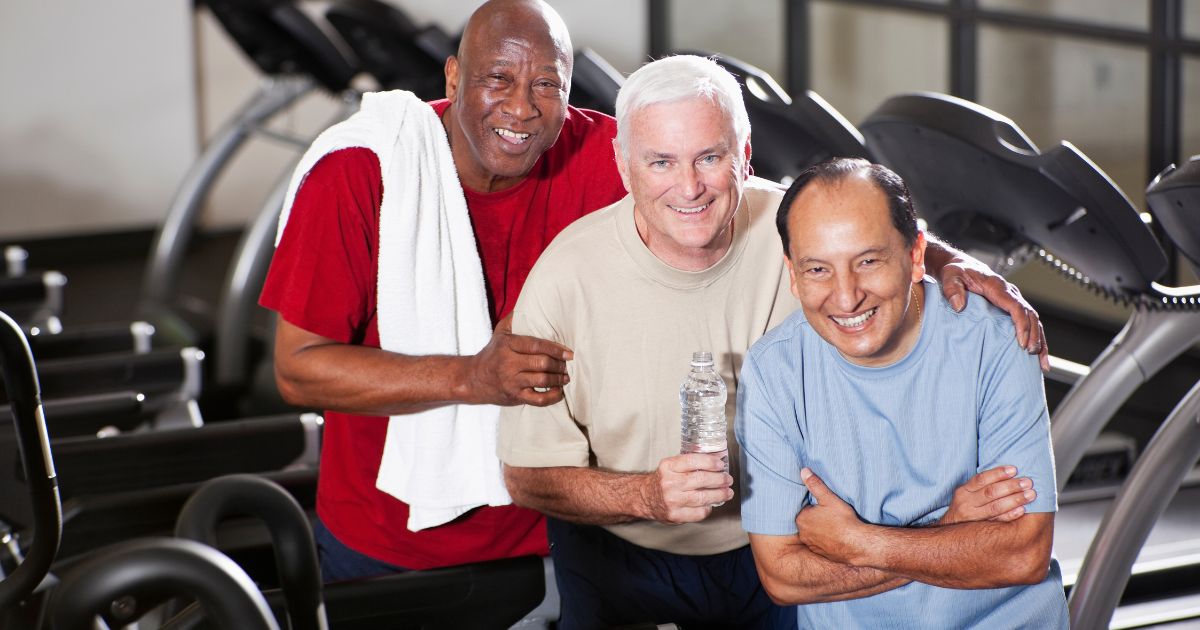Introduction
As men age, maintaining muscle mass and vitality becomes more challenging but also more essential for health and quality of life. After age 50, natural changes in hormones, metabolism, and physical resilience can lead to reduced strength, muscle loss, and lower energy levels. For men looking to maintain optimal health, focusing on muscle and vitality is key to living an active, fulfilling life. Here, we’ll explore the best strategies for preserving muscle mass and boosting vitality for men over 50, from fitness and nutrition tips to hormone optimization.
The Importance of Muscle Maintenance in Men Over 50
Maintaining muscle as we age is crucial for several reasons. Muscle mass supports metabolism, helps stabilize blood sugar, protects against falls and fractures, and is integral to physical and mental well-being. For men over 50, declining testosterone and lower activity levels can lead to muscle atrophy and decreased energy, impacting day-to-day functionality.
- Metabolic Health and Weight Management Muscle tissue is metabolically active, meaning it burns more calories at rest compared to fat. Preserving muscle mass helps maintain a healthy metabolism, reducing the risk of age-related weight gain and conditions like diabetes. Regular exercise and a protein-rich diet are essential to prevent the muscle loss that commonly accompanies aging.
- Enhanced Physical Function and Mobility Muscle supports bone strength, joint stability, and physical endurance, all of which are essential for maintaining an active lifestyle. For men over 50, maintaining strength through consistent resistance training can significantly enhance mobility and reduce the risk of injury.
Key Tips for Maintaining Muscle and Vitality for Men Over 50
1. Embrace Strength Training
Strength training, or resistance training, is one of the most effective ways to build and maintain muscle. Engaging in regular strength exercises, such as weight lifting, bodyweight exercises, and resistance bands, helps stimulate muscle growth and prevents age-related muscle loss. Aim to train major muscle groups (legs, chest, back, and arms) at least two to three times per week.
2. Prioritize Protein-Rich Nutrition
Protein is essential for muscle growth and repair. As men age, their protein needs increase to offset the natural muscle loss associated with aging. Include protein-rich foods in every meal, such as lean meats, fish, eggs, beans, and plant-based protein sources. Protein supplements can also help meet daily needs, especially after workouts when muscles need extra nutrients for repair and growth.
3. Stay Active with Cardiovascular Exercise
While strength training is crucial for muscle maintenance, cardio exercise also supports overall vitality. Activities like brisk walking, swimming, cycling, or even dancing improve cardiovascular health, enhance endurance, and boost energy levels. Aim for at least 150 minutes of moderate-intensity cardio each week to maintain a healthy heart and lungs.
4. Consider Hormone Optimization Therapy
As testosterone levels decline with age, many men experience a reduction in muscle mass, energy, and libido. Hormone optimization therapy, such as testosterone replacement therapy (TRT), can help restore testosterone to healthy levels, making it easier to maintain muscle, increase energy, and improve quality of life. Consult with a specialist to see if hormone therapy is appropriate for your needs.
5. Focus on Flexibility and Balance
Flexibility and balance training can help prevent injuries, improve posture, and support overall mobility. Practices like yoga, pilates, or stretching exercises enhance flexibility, while balance exercises (such as standing on one leg) improve stability. Improved balance and flexibility reduce the risk of falls, a common concern for aging adults.
6. Stay Hydrated and Limit Alcohol
Hydration is often overlooked, yet it’s essential for muscle function and overall health. Staying well-hydrated aids in muscle recovery and prevents cramps. Additionally, limit alcohol intake, as excessive drinking can interfere with muscle growth, impair sleep, and contribute to weight gain.
7. Prioritize Rest and Recovery
As men age, their bodies require more time to recover from physical activity. Ensure adequate sleep and consider rest days in your exercise routine to allow muscles to repair and grow. Quality sleep also supports hormone balance, which is essential for muscle and vitality.
Conclusion
For men over 50, maintaining muscle and vitality requires a balanced approach, combining strength training, protein-rich nutrition, cardio exercise, and potentially hormone optimization therapy. Staying active, focused on recovery, and prioritizing overall wellness can support muscle maintenance, enhance energy, and help you enjoy an active and fulfilling life well into your later years. Remember, it’s never too late to start focusing on muscle health—small, consistent changes can have lasting benefits.

